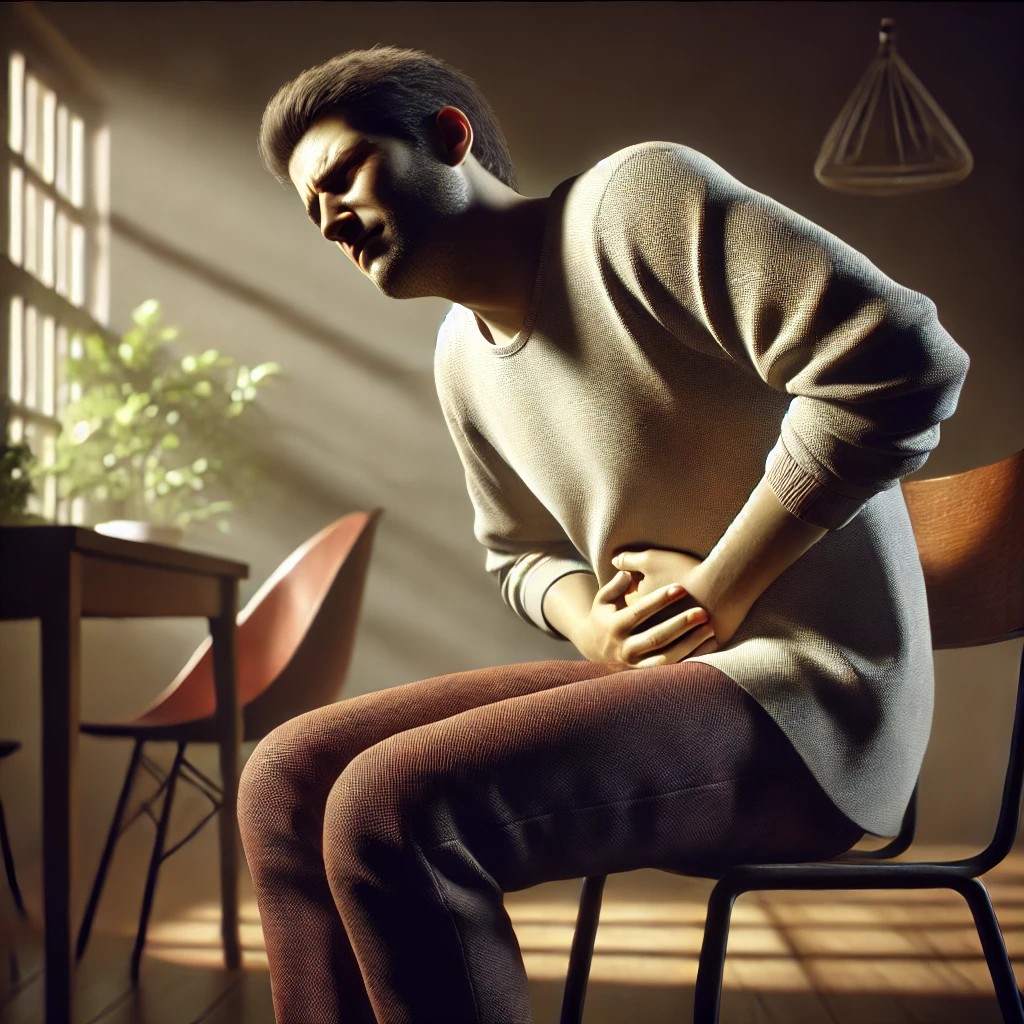Treat Internal Hemorrhoids

Internal hemorrhoids—because life wasn’t already inconvenient enough. Unlike external hemorrhoids that announce their presence with pain and discomfort, internal hemorrhoids are the sneaky ones, quietly lurking inside your rectum until they decide to make things interesting (read: start bleeding or prolapsing).
But don’t worry—you’re not alone, and you’re not doomed to a life of awkward bathroom experiences. This guide will walk you through everything you need to know about internal hemorrhoids, from what causes them to how you can kick them to the curb.
What Are Internal Hemorrhoids?
Internal hemorrhoids are swollen veins inside the rectum. Unlike external hemorrhoids, they don’t usually cause pain because there are fewer pain-sensing nerves inside the rectum (small blessings, right?). However, they can bleed, itch, or prolapse (fall out of the anus), leading to discomfort and irritation.
Stages of Internal Hemorrhoids
Internal hemorrhoids come in four fun stages—ranging from mildly annoying to “I need to see a doctor ASAP.”
Grade 1: The mildest form—these stay inside the rectum and may cause occasional bleeding, but they’re generally silent.
Grade 2: These prolapse (peek out of the anus) during straining but return inside on their own.
Grade 3: These prolapse and need to be manually pushed back in after straining.
Grade 4: The most severe stage—prolapsed hemorrhoids that stay outside the anus and cannot be pushed back in. These may require medical intervention.
What Causes Internal Hemorrhoids?
Internal hemorrhoids don’t just show up uninvited—they develop due to increased pressure in the rectal area. The biggest culprits include:
Chronic straining during bowel movements (stop forcing it!)
Sitting too long on the toilet (we see you, scrolling through your phone)
Low-fiber diet (fiber = softer stools = less straining)
Pregnancy (because growing a human isn’t challenging enough)
Obesity (extra weight puts extra pressure on rectal veins)
Frequent heavy lifting (without proper form, your rectum pays the price)
Aging (we love getting older, but our veins? Not so much.)
Symptoms of Internal Hemorrhoids
Unlike their external counterparts, internal hemorrhoids are not usually painful—but they still make their presence known in other ways:
Rectal bleeding: Bright red blood on toilet paper or in the bowl (but no pain).
Mucus discharge: A slimy surprise after a bowel movement.
Itching and irritation: Internal hemorrhoids can cause inflammation that makes the anal area itchy.
Feeling of incomplete evacuation: Like there’s something still “there” even after you go.
Prolapse: A lump or bulge near the anus when hemorrhoids extend outside.
Diagnosing Internal Hemorrhoids
If you notice rectal bleeding or persistent discomfort, a doctor can diagnose internal hemorrhoids with:
Digital Rectal Exam (DRE): A gloved, lubricated finger is used to feel for abnormalities inside the rectum.
Anoscopy: A small tube with a light is inserted into the rectum to get a better look.
Sigmoidoscopy or Colonoscopy: If bleeding is a concern, these procedures help rule out other issues like polyps or colorectal cancer.
Home Remedies for Internal Hemorrhoids
Mild internal hemorrhoids often go away on their own or with simple lifestyle changes. Here’s what helps:
1. Increase Fiber Intake
Fiber is your best friend when it comes to softer, easier-to-pass stools. Aim for 25-30 grams of fiber per day from:
Whole grains (oats, brown rice, whole wheat bread)
Fruits (apples, pears, bananas)
Vegetables (broccoli, spinach, carrots)
Legumes (beans, lentils, chickpeas)
Pro Tip: Drink plenty of water—fiber without water can make constipation worse.
2. Avoid Straining and Sitting Too Long
Go when you need to. Holding it in makes stools harder.
Limit toilet time to 5 minutes. If you need entertainment, read standing up.
Use a Squatty Potty. The more natural position reduces strain.
3. Sitz Baths
Soaking the rectal area in warm water for 15-20 minutes can reduce inflammation and irritation. Do this 2-3 times a day for relief.
4. Over-the-Counter Treatments
If symptoms persist, try:
Hydrocortisone creams (reduce inflammation)
Witch hazel wipes (soothe irritation)
Stool softeners (prevent further straining)
Medical Treatments for Internal Hemorrhoids
If home remedies don’t work, doctors offer several effective treatments:
1. Rubber Band Ligation
A rubber band is placed around the base of the hemorrhoid, cutting off blood supply so it shrinks and falls off within a few days. (Not as bad as it sounds.)
2. Sclerotherapy
A chemical solution is injected into the hemorrhoid, causing it to shrink.
3. Infrared Coagulation (IRC)
A heat-based treatment that shrinks hemorrhoids using infrared light.
4. Hemorrhoidectomy
For severe cases, surgical removal is the most effective treatment, though recovery can be painful.
5. Stapled Hemorrhoidopexy
A procedure that staples prolapsed hemorrhoids back into place—less painful than a hemorrhoidectomy but not suitable for all cases.
Preventing Internal Hemorrhoids
If you never want to deal with internal hemorrhoids again, here’s what you can do:
Eat more fiber. Fiber = smoother stools = happy rectum.
Stay hydrated. Water keeps things moving.
Exercise regularly. Keeps digestion in check.
Don’t ignore the urge. Waiting = harder stools.
Avoid prolonged sitting. Take breaks from desk jobs.
Final Thoughts
Internal hemorrhoids may be silent troublemakers, but they’re manageable and treatable. Whether they cause mild inconvenience or require medical intervention, there are plenty of ways to find relief—without living in fear of every trip to the bathroom.
If you experience persistent bleeding, discomfort, or prolapsed hemorrhoids, talk to a doctor to explore treatment options. And remember: fiber is your best friend, and your phone doesn’t belong in the bathroom.
Find more health tips and resources.
